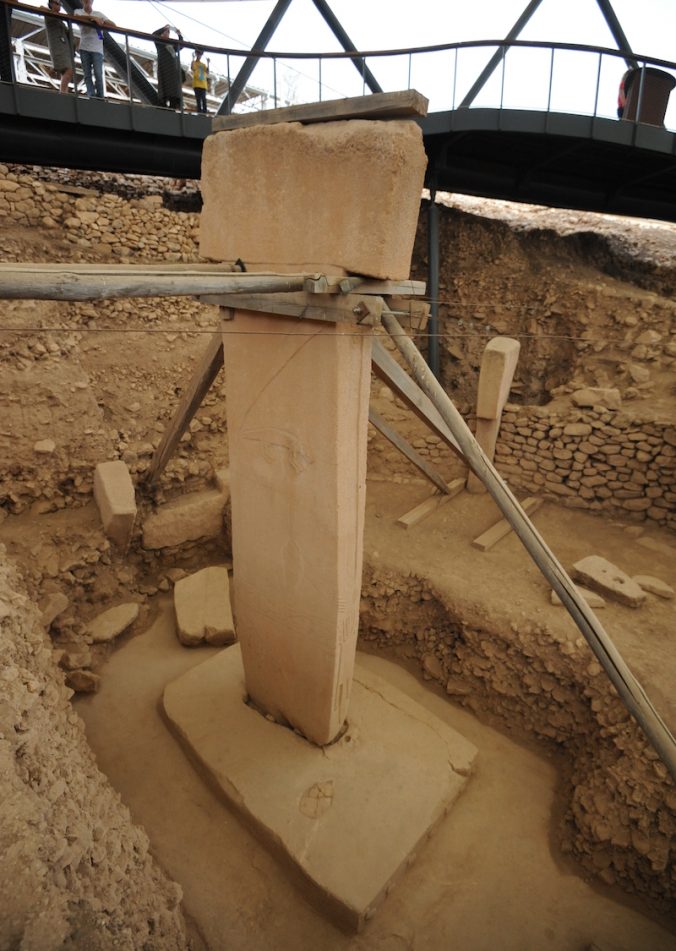
A T-shaped pillar of approximately 7 m length left in the quarries on the western plateau (Photo: © DAI).
Upcoming:
Between 31st August and 4th September, the 22nd Annual Meeting of the European Association of Archaeologistzs will be held in Vilnius, Lithuania.
The Göbekli Tepe project will participate in this event with a paper by Oliver Dietrich on “Building big. Incentives for cooperative action of hunter-gatherers at early Neolithic Göbekli Tepe” in the frame of session TH3-09 Communities united: linking archaeological record and conceptual approaches on social cohesion, organized by Agnė Čivilytė and Laura Dietrich.
Here´s the abstract:
‘During the 10th and 9th millennia BC, at Göbekli Tepe in southeastern Anatolia monumental circular enclosures made up of up to 5.5m high pillars, decorated richly, mainly with animal motifs, were erected by hunter-gatherer communities. One of the important questions regarding this site concerns the way in which small-scale groups joined their forces for construction work, creating a place that clearly is strongly connected to their worldview.
20 years of excavation have revealed some clues. The distribution of elements of Göbekli´s iconography evidences a catchment area of about 200km around the site as the homeland of these groups. A close look at the massive amount of filling in Göbekli´s enclosures reveals that these are not dealing sterile sediments. The material used to intentionally backfill the buildings at the end of their use-lifes consists of limestone rubble from the quarries nearby, flint artefacts and immense amounts of animal bones smashed to get to the marrow, clearly the remains of meals. With traces of settlement absent, for Göbekli Tepe this readily leads to the idea of large, ritualized feasts as a mode to gather workforces and ensure cooperation. The present contribution will explore the likeliness and possible consequences of this scenario.’
See you there!
Friday, September 2nd, 2016, 9.15, Faculty of History, Room 331

0 Comments
2 Pingbacks